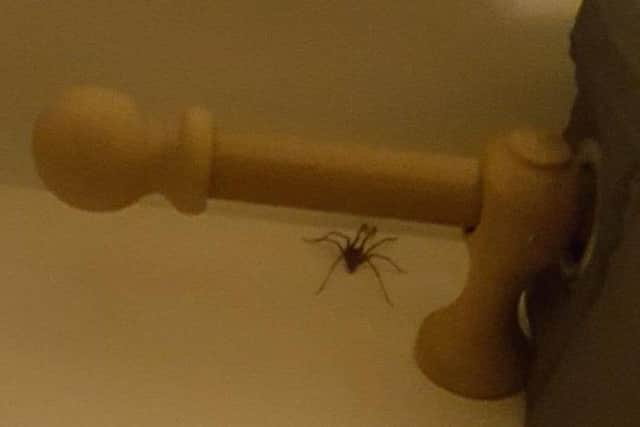Spider season starts early as massive sex-crazed arachnids invade Wakefield houses
and live on Freeview channel 276
People afraid of spiders (isn’t that all of us?) dread the beginning of September, the official start of Spider Season™.
But this year, the season is beginning EARLY - thanks to the unseasonable heatwave driving them out of their garden hiding places and into homes.
Advertisement
Hide AdAdvertisement
Hide AdHouse spiders will remain in their webs in sheds, garages and wood piles during the summer, until going on the hunt for a mate in autumn.


That means they’ll be moving into your house in the hope of getting some action.
Despite their fearsome looks, house spiders aren’t dangerous - and can be safely taken back to the garden with a glass and a bit of paper (but you might want to close your windows).
Spiders also play an important role in your home’s ecosystem - they eat flies, aphids, ants, moths and other pests that can clutter up your home.
Advertisement
Hide AdAdvertisement
Hide AdIn many ways, a spider is the best critter you can keep on hand (but they aren’t to everyone’s tastes).
A spider’s typical life, according to the British Arachnological Association
The powder-blue young emerge from their egg sacs, together with 70 or so siblings, in late spring.
After a few weeks they disperse, build their own miniature webs and start to feed.
Advertisement
Hide AdAdvertisement
Hide AdThe young of the year moult two or three times before overwintering as halfgrown juveniles.
Growth resumes the following spring and the spiders reach maturity later that year - males in August or September and females a couple of weeks later.
The newly-mature males leave their webs and search for the more sedentary females.
This is the time of year when large house spiders are often seen running across carpets or become trapped in baths and sinks.
Advertisement
Hide AdAdvertisement
Hide AdWhen a male finds a female that is soon to moult to maturity he moves into her retreat and stays close by, guarding her until she is adult.
Repeated bouts of mating then occur with the male often lingering for the next few weeks to prevent the female mating with other partners.
When cold weather comes the male dies – he’s then about 18 months old.
The female overwinters within her retreat and in spring, when temperatures and food supplies increase, she begins to build a series of egg sacs.
Advertisement
Hide AdAdvertisement
Hide AdThese are hung close to the web and are about the size of a ring-finger nail.
They are made of white silk and often decorated externally with the remains of past meals such as fly carcasses. The mother plays no further role in the lives of her offspring and usually dies before the next winter, when she’s about 30 months old.